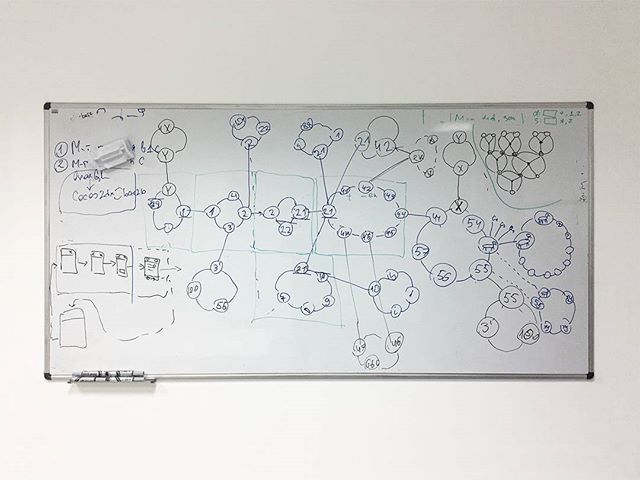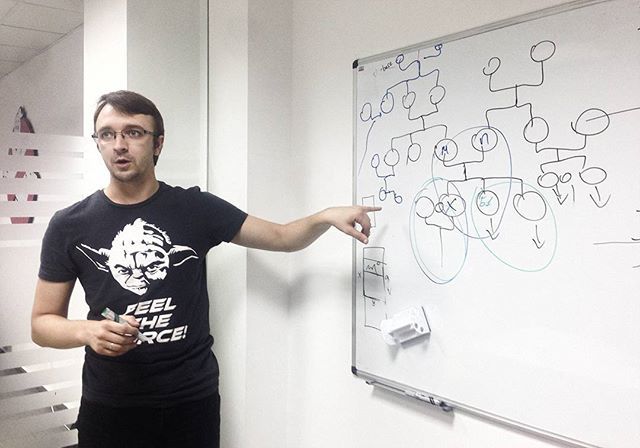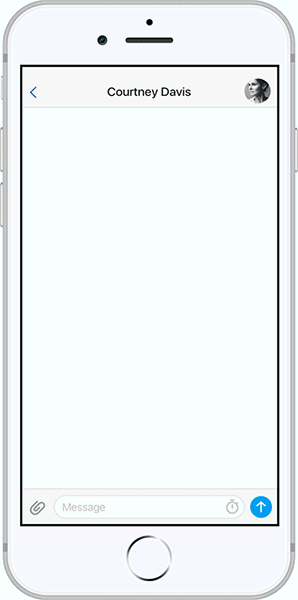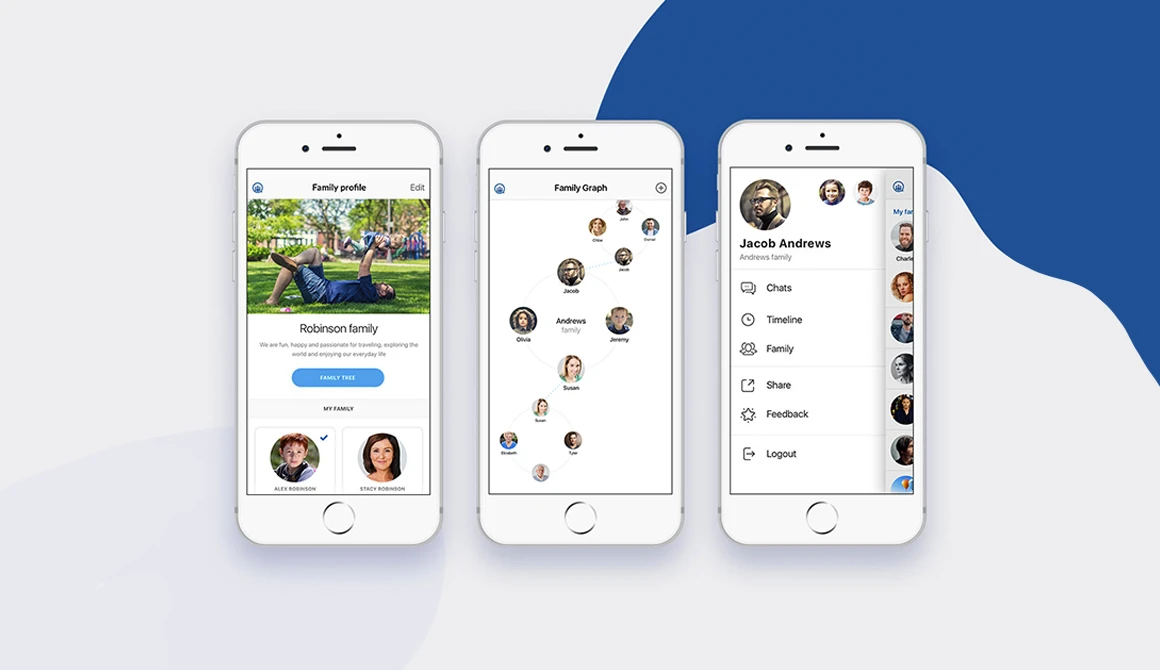- What we do
- Services
- Solutions
- Our Works
- Company
- Contact Us
December 14, 2021
How We Created Famlicious, a Family Chat App for iOS and Android
Find out how we built a family chat app that connects users with their families, facilitates family communications, and provides a unique way of building family trees.
Work: We implemented family chats, family member profiles, and user timelines. What’s more, Famlicious automatically builds dynamic family trees. The app also provides the ability to share photos and videos and create secure child accounts.
Summary: Our company developed a mobile chat application that enables people to get closer to their familiy. The app is available in the App Store and Google Play and has new features and a promotion. The most remarkable function is the unique way of building family trees - find out more in the article!

The idea of the project
The product development started in January 2017. Jim Barkow, former CEO of Longboard Media, a full-service media management network, angel investor and startup consultant as well as Head of Strategic Partnership at eBay, came to us with the idea of family chat app development. He wanted to launch a mobile application that would help people keep in touch with their families in our hectic and digital times.
“I was traveling and working a lot and missing my family connections. One day, I realized that I infrequently communicate with my family and that I know my business colleagues better than my cousins. So the idea to create Famlicious was born.”
Jim

Why does a family need its own messenger?
Among the huge number of different messenger apps, it becomes difficult to distinguish any special one. Most of the apps are very similar to each other. In addition to instant messaging, they all provide the ability to exchange various files, such as images, audio files, videos, and documents.
However, common messenger apps don’t solve the problem of communication, for example, between children and parents. Children can skip messages, being carried away by games and cartoons. Adults are not always able to respond to messages from family members at the right time, getting lost in messages about work. Therefore, family messenger apps began to appear, allowing you to be always in touch.
So what makes a family chat stand out? Family chats are unique because they prevent messages from being lost in spam and work messages. In a family messenger app, you only communicate with your closest people and don't miss important information.
The main purpose of the family chat is to maintain a good level of communication with the people related to us. It helps not only to stay in touch with your relatives but also to strengthen the relationships with them.
What features to consider in a family chat
Although this is a messenger app, and most messenger apps have similar functions, you still need to take into account some features.
- User-friendliness
A family messenger should require the minimum number of actions from the user. When each of us has at least three or four messenger apps installed with all sorts of functions and settings, it’s better to avoid more complex and incomprehensible messenger apps and focus on an autonomous and simple chat, where all you need to do is enter family contacts and wait for messages from them.
- Chat
Modern digital technologies have opened up new horizons for people to communicate with each other. Parents and their children can create a chat where they can not only write messages to each other but also send images and share videos. The advantage for parents is a sense of closer communication and an opportunity to participate more actively in the daily life of children.
- Security
Today, children use their phones as much as adults which means they can also be open to fraud. That’s why it’s important to create secure child accounts so both parents and children will feel safe.
- Engagement and gamification
In addition to the fact that such a messenger app should be as simple and useful as possible, it also should be engaging. For example, in the Familicious app, a family tree was implemented for this purpose. The family tree can expand as new contacts are added, as well as demonstrate fairly clearly intra-family relationships, like, mother-daughter, grandfather-grandson, and so on.
The more understandable, interesting, and carefully designed your app is, the more comfortable its users will feel.
Family chat app development
Our firm implemented a mobile application from scratch. First and foremost, we clarified the product goals and created a technical specification. Many cool ideas came to us during the brainstorming stage: we defined the app tasks, decided to build an MVP (minimum viable product), and integrated dynamic family trees.
The project development comprised the following steps:
- Idea analysis and software requirements for document preparation: The very start of the process included the research that confirmed the reliability and potential success of the app. Also, it helped us define the necessary functionality that users will like.
- Creation of wireframes: We at Yellow never skip this stage when starting a new project. Wireframes are a great tool for refining product concepts, experimenting, testing, and collecting user feedback at the earliest stage of software development.
- Product prototype and design creation: Prototyping is the next stage in product development. It allowed the client to see the user flow and understand what users will see in the future application.
- Chat app development: We started with the development of the app’s core feature. When the chat was completed, we moved to other functions necessary for an MVP.
- Testing and bug fixing: Even though the MVP includes only the main features, it requires the same quality of testing. It was an important stage since we wanted to ensure that the users will receive a functional chat app.
- Project launch in the App Store and Google Play: When the work was done, the app appeared in App Store for iOS and in Google Store for iOS. Also, we started adjusting the app according to users’ feedback.
- Post-project support and implementation of new features: After the release, the work on Famlicious continued. We and the client discussed new functions and now we are working on implementing them.

Project team
Five team members were directly involved in the development:
- iOS engineer
- Android engineer
- Designer
- Project manager/business analyst
- QA engineer
Tools & technologies used
- Back-end: Ruby on Rails
- iOS: Swift, Objective-C
- Android: Java, Kotlin
- Chat development: PubNub
- Graph Databases: Neo4j, PostgreSQL
Why did we decide to build an MVP
In the beginning, the customer’s idea was to create something like a social network for families. Jim thought about implementing large robust functionality that would include user chats, likes and dislikes, comments, emojis, and much more.
However, releasing a full-scale chat app may not be the best decision for a start. As we always take care of our clients, we recommended developing an MVP because of the following reasons:
- Short time to market
First and foremost, it allows companies to quickly receive a working solution and test it on the audience. You collect user feedback and get a clear understanding of how to improve the product. And afterward to add the features that your users want to see.
- Reducing costs
This benefit partially stems from the previous one. Since the integration of the key features only takes less time, the initial budget for the app will be lower.
- Getting valuable feedback
Before embarking on full-scale development, it’s beneficial to collect some real-user feedback. It will show what your target audience wants, what you should fix, and if it’s worth investing more resources in the development.
Get free cost estimation from a reliable software company
Contact usProject challenges and implementations

Here are the most interesting challenges our team came through on the project:
Challenge #1: Dynamic family trees
It was a real challenge to implement family threes of dynamic nature. Generally, trees are rising, failing, or branching to the sides and are not dynamic. Therefore, a standard family tree can grow from top to down or from the bottom upwards and can’t automatically get each new user added to the required trees. As we needed them to be instantly created without user intervention, these ways of building trees didn’t suit our goals at all.
In addition, it’s instantly created from the added connections. How can you make family trees dynamic so that they automatically get updated once new family members are registered in the app? It was a top-priority issue that we had to solve.

How we solved it
- Our specialists considered all of the possible ways to integrate this feature. Many hours were spent at the whiteboard. As a result, we decided to make the tree rise to all the sides so that the circle would be created. All of the new users are automatically added to the tree and all of the connections are displayed on the app screen.
- Then, a truly unique feature required an unusual solution: a graph database. Databases are used for building relationships between objects-parts of family trees. After several graph platforms were considered, we chose Neo4j. It enabled us to integrate the automatic tracking of kin relations and joining certain people in one family tree. We also applied a PostgreSQL database for all of the other information: family names, photos, user profiles, descriptions, and so on.

Challenge #2: Chat development
To provide families with the ability to communicate and keep in touch with each other, we needed to implement sufficient chat functionality.
How we solved it
We applied a PubNub chat framework. As the tool provides powerful chat APIs, security, and scalability, it became a good solution for our project.

Summing it up
Now, the project is released on both iOS and Android. Users can install it, create their profiles, and connect with family members around the world.
Today we get tons of messages all the time. Among such a large flow of incoming information and spam, it’s easy to accidentally ignore messages from the people with whom we would like to talk to the most.
No matter how we set up our usual messenger apps, the chance that we will miss important messages is still high, and Famlicious was created to prevent that.
✔Read next:
Best Customer Service Chatbot Example
How to Create a Voice Chat App From Scratch
How to Create a Chatting Website: Important Features and Design Tips
Do you also have an app idea or need project estimation? Contact us to schedule a free consultation!
Get in touchGot a project in mind?
Fill in this form or send us an e-mail
🌳 What is Famlicious?
🌳 Why does a family need its own messenger?
🌳 What features are important for a family messenger?
🌳 Why build an MVP?
Subscribe to new posts.
Get weekly updates on the newest design stories, case studies and tips right in your mailbox.
